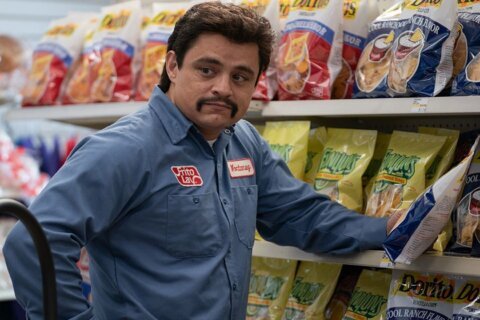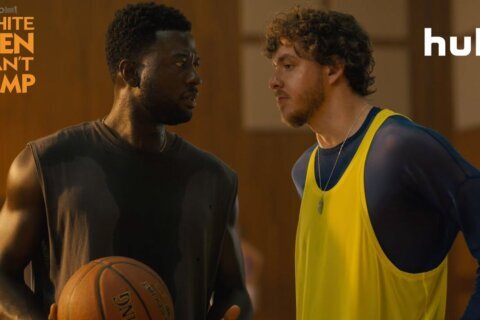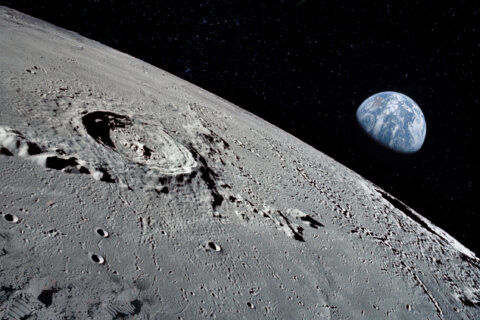Jason Fraley, WTOP film critic
WASHINGTON – It says something about the state of Hollywood when the year’s three biggest comedies — “21 Jump Street,” “American Reunion” and “The Three Stooges” — have all been reboots. Stay tuned for “Anchorman 2” and “The Hangover Part III” next year.
What happened to the days of original comedies? The year 1933 alone saw the best original work of The Marx Brothers (“Duck Soup”), Laurel & Hardy (“Sons of the Desert”), Mae West (“She Done Him Wrong”) and John Barrymore (“Dinner at Eight”); 1941 saw Preston Sturges pen both “Sullivan’s Travels” and “The Lady Eve”; 1968: “The Producers” and “The Odd Couple”; 1980: “Caddyshack” and “Airplane!”; 1982: “Tootsie,” “Diner” and “Fast Times at Ridgemont High;” 1984: “Ghostbusters,” “Beverly Hills Cop” and “This is Spinal Tap;” even 2005 with the one-two punch of “Wedding Crashers” and “The 40-Year-Old Virgin.”
Sorry, 2012. You’re not keeping up your end of the bargain.
And so, we get “The Three Stooges,” a remake we should’ve seen coming from a mile away. Don’t even try to hold your hand up vertically in front of our eyes to stop it — Hollywood always finds a way to smack us over the head.
Thankfully, the film disproves many of our preconceived doubts. Much of it is actually pretty funny, just not enough to make you drop on the ground and spin in circles.
In this rendition, Larry, Moe and Curly are abandoned on the doorstep of an orphanage. Years later, the facility is about to fold, because it can’t pay back all the damages and insurance claims caused by the trio of nitwits. So, the boys set out to raise the $80,000 needed to save it — and get caught up in a murder plot in the process.
The film is directed by Bobby and Peter Farrelly, who co-wrote the script with Mike Cerrone, their co-writer on “Me, Myself & Irene” (2000) and an actor in “Kingpin” (1996) and “Stuck on You” (2003). The Farrelly Brothers have struck comedy gold before with “There’s Something About Mary” (“Is that hair gel?”) and “Dumb and Dumber” (“Big gulps, huh? Alright. Welp, see ya later!”), but they haven’t done anything decent since Jack Black’s breakout in “Shallow Hal” (2001).
The fact that they are returning with “Dumb and Dumber 2” in 2014 may signal that the brothers are now spinning wheels, just as content re-creating as creating.
In “The Three Stooges,” they take the challenge of re-creation seriously, for comedy is a serious business. Larry, Moe and Curly have all been dead since at least 1975, but Saturday cable marathons have maintained their pop culture personas such that any deviation would have been costly.
The Farrellys considered a number of A-listers for the roles, including Sean Penn, Jim Carrey and Benicio Del Toro. Instead, they were smart and cast a trio of lesser-known dead-ringers. The most recognizable is Sean Hayes (“Will & Grace”), who matches the nasally puns and receding-hairline frizz of Larry Fine. Chris Diamantopoulos (“The Kennedys”) brilliantly recreates the bowl cut attitude of Moe Howard. And Will Sasso (“Happy Gilmore”) masters the zany “nyuk nyuk” mannerisms of Curly Howard. After all, he’s been practicing his impersonation for years on “Mad TV.”
Still, no matter how good they are, they’ll always feel like carbon copies. Imagine, 50 years from now, someone doing an impression of Jim Carrey. Even if they nailed it, it would still seem like an imitation. Hats off to Hayes, Diamantopoulos and Sasso for coming as close as possible in an impossible task.
The Farrellys are also faithful in their storytelling, showing respect to their predecessors. Much of the physical comedy seems familiar and the gags are layered with classic comedic timing (albeit with a “Don’t try this at home” bumper). They’ll plant an object early in a scene (i.e. a sledgehammer in a water bucket), only to have it factor in five pratfalls later, long after we’ve forgotten about it.
Occasionally, they take it too far — the baby nursery scene is more gross than funny — but they also poke fun at random exposition (in a conversation between two young orphans) and mine laughs from background objects (wall plaques for fictional law firms like “Kickham, Harter and Inthagroyne”). You’ll sit in the theater feeling stupid for laughing, but you just can’t help yourself.
The presentation itself is “old school,” with three acts broken up into episodes, each with their own title cards and “iris” transitions. The episodic approach works for a cast that includes so many TV stars: Jane Lynch (“Glee”), Sofia Vergara (“Modern Family”), Jennifer Hudson (“American Idol”) and Larry David (“Curb Your Enthusiasm”), who worked with Bobby Farrelly on “The Virgin” episode of “Seinfeld.” David steals the show as a cranky female nun, constantly irritated by the Stooges’ antics.
The TV references don’t stop there. Behold a subplot with Moe landing a gig on “Jersey Shore.” If you like reality TV, there are more than enough cameos to go around. If you despise it, you’ll love seeing him pester Snooki and The Situation and crack jokes at the expense of the Kardashians. It all plays into an undercurrent of generational humor, comparing the Stooges’ classic eye-pokes to today’s Facebook pokes and watching Curly trying to use an iPhone.
Whether past or present, classic slapstick or current, reality TV, mankind loves watching stupid people doing stupid things. It makes us feel better about ourselves. There is no danger in loving “Dumb and Dumber” if you don’t allow it to dumb you down. The problem is that too many people stop there without yearning to understand the other side of the equation — appreciating film as art. If academics can learn to laugh at “Animal House” and mainstreamers can learn to appreciate “Citizen Kane,” our popular culture will be much better off. It’s the equivalent of being cinematically well-rounded.
The Stooges certainly fall on the lowbrow end of the spectrum. Few did it better. Still, I’ve always thought the Marx Brothers were the superior talents, because they mastered both the lowbrow slapstick of Harpo and Chico and the highbrow, Woody Allen-esque wit of Groucho (“I can see you right now in the kitchen, bending over a hot stove. But I can’t see the stove”). I suppose it all depends what mood you’re in. If you want to challenge your brain to keep up with witty jokes, pop in the Marx Brothers. If you want to escape on a Saturday morning, go with the Stooges.
If nothing else, the Farrellys’ “Stooges” will make you want to rent some old DVDs or look up some of the shorts on YouTube. Contrary to nostalgia, the original “Three Stooges” shorts weren’t any less “stupid,” better plotted, or better directed. They were just as silly in their slapstick. But what they had was originality: They were the “genuine article,” as John Candy’s Del Griffith said in “Planes, Trains and Automobiles” (1987). In fact, a character even echoes Del in telling the Stooges that their biggest strength is being comfortable in their own skin.
It’s always more fascinating to watch the icons in their own skin than masks of imitation. Would it have been better if Hollywood compiled two hours of the original Stooges’ best bits into a re-release?
Soitenly!
If only today’s audiences would go see it.
★ ★ 1/2
The above rating is based on a 4-star system. Read more from WTOP Film Critic Jason Fraley by clicking “Fraley on Film” under the “Living” tab above, and check out his blog, The Film Spectrum.
(Copyright 2012 by WTOP. All Rights Reserved.)








